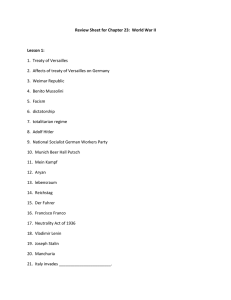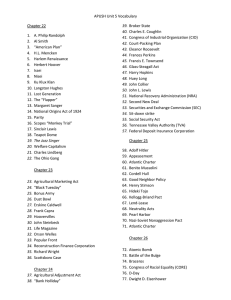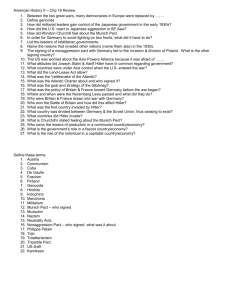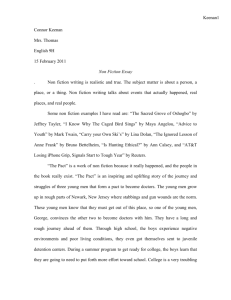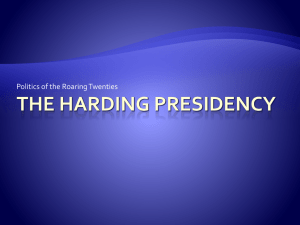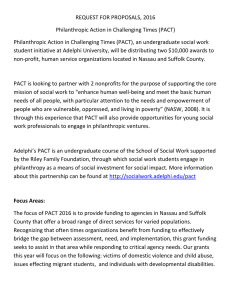AmericanGovernmentCh.17Sec.4
advertisement
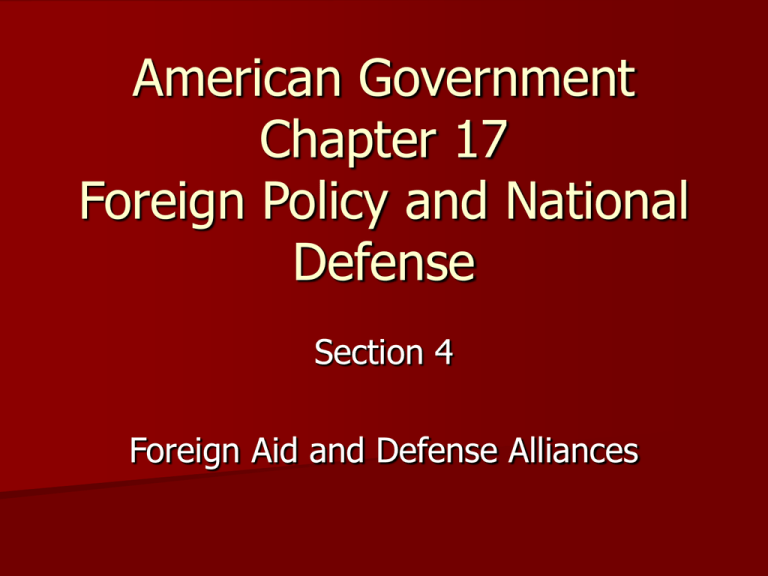
American Government Chapter 17 Foreign Policy and National Defense Section 4 Foreign Aid and Defense Alliances Security Alliances NATO - North Atlantic Treaty Organization Members U.S., Canada, G.B., France, Italy, Portugal, Netherlands, Belgium, Luxembourg, Denmark, Norway, Iceland, Greece, Turkey, Spain, Germany, Poland, Hungary, Czech Republic Agreement Mutual defense pact – an armed attack against one is considered an attack against all Rio Pact Members U.S., Canada, 32 Latin American nations Agreement Mutual defense pact and agreement to seek peaceful settlements of all disputes among member nations ANZUS - What does it stand for? Membership Australia, New Zealand, U.S. Agreement Regional security alliance, ensure collective security in Pacific region Japanese Pact Members Japan, U.S. Agreement In return for American protection, Japan agrees to allow the United States to maintain land, sea, and air forces in Japan Philippines Pact Members Philippines, U.S. Agreement Continuing American military presence in the Philippines to guarantee Philippine independence Korean Pact Members South Korea, U.S. Agreement U.S. agrees to aid South Korea in the event of an invasion United Nations Organizations General Assembly of Justice Debates issues, makes recommendations to Security Council and other bodies, elects officials, proposes amendments to charter, shares power to – admit, expel or suspend members Security Council Responsible for keeping the peace – through economic or military sanctions Economic and Social Council Carries out the UN’s economic, cultural, educational and health programs International Court of Justice Decide cases voluntarily brought to it Secretariat Administrative chores – can bring matters before the Security Council Terms Foreign Aid - economic assistance that the U.S. gives to other countries Regional Security Alliance - example – Rio Pact UN Security Council - nonpermanent members – 2 year terms – elected by the General Assembly

